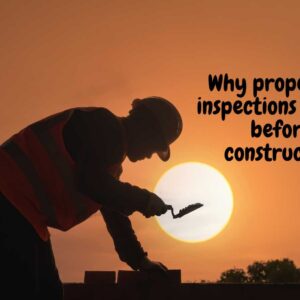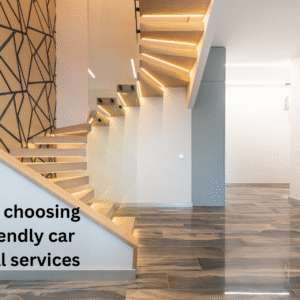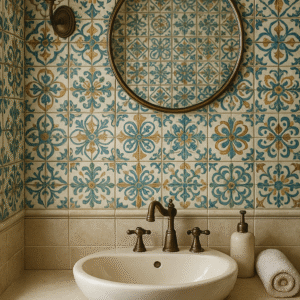When it comes to roof installation, homeowners and commercial property managers often have to make a critical decision: pitched or flat roof? While pitched roofs are more common in residential homes, flat roofing has gained popularity due to its modern aesthetic, cost-effectiveness, and ease of maintenance. At Weather Proofing Roofing, we’ve helped countless property owners make informed choices about flat roofing—and in this post, we’ll break down everything you need to know.
What Is Flat Roofing?
Flat roofing, as the name suggests, is a roofing style that appears flat to the eye but typically has a slight pitch to allow for water drainage. These roofs are commonly used in commercial buildings but are also becoming more popular in residential construction, especially with contemporary architectural styles.
Flat roofs can be constructed using various materials, including:
- Built-Up Roofing (BUR): Layers of tar and gravel
- Modified Bitumen: Asphalt-based and often torch-applied
- EPDM Rubber: A highly durable synthetic rubber
- PVC and TPO Membranes: Thermoplastic materials known for energy efficiency
Each option comes with its own benefits, and the right choice depends on your budget, climate, and intended use of the roof space.
Advantages of Flat Roofs
Flat roofing comes with several distinct benefits that make it a smart choice for both commercial and residential buildings:
1. Cost-Effective Installation
Flat roofs require fewer materials and less labor than pitched roofs, which translates to lower installation costs. The simplicity of design means quicker turnaround times, making it ideal for budget-conscious property owners.
2. Usable Space
Unlike pitched roofs, flat roofs can serve as functional spaces. Think rooftop gardens, patios, or even solar panel installations. This makes them particularly appealing in urban environments where space is at a premium.
3. Easier Maintenance and Inspection
With a flat surface, it’s much easier and safer for technicians to inspect, repair, and maintain the roof. This not only saves on long-term costs but also reduces the risks involved with maintenance tasks.
4. Modern Aesthetics
A flat roof gives a sleek, contemporary look that many homeowners and architects find appealing. It pairs well with minimalist and modern designs, increasing curb appeal and property value.
Challenges and Considerations
Of course, no roofing system is without its challenges. Flat roofs, while practical, do come with a few considerations:
1. Drainage Issues
Even though flat roofs have a slight pitch, they are more susceptible to pooling water, which can lead to leaks if not properly maintained. Quality installation and regular inspections are crucial.
2. Shorter Lifespan (in Some Materials)
Depending on the material used, some flat roofs may not last as long as their pitched counterparts. However, with modern materials like TPO and EPDM, the gap is closing fast.
3. Thermal Efficiency
Flat roofs can absorb more heat, especially if they’re made with darker materials. Choosing reflective roofing membranes can help mitigate this issue and improve energy efficiency.
Installation and Maintenance Tips
At Weather Proofing Roofing, we emphasize the importance of professional installation. A well-installed flat roof can last decades, while a poorly done job can lead to immediate problems. Here are a few tips:
- Hire Certified Installers: Always work with experienced roofing professionals who specialize in flat roofing.
- Schedule Regular Inspections: Twice a year (spring and fall) is a good rule of thumb.
- Clear Debris: Leaves, twigs, and other debris can block drains and cause pooling.
- Check for Blistering or Cracks: Early detection of damage can prevent costly repairs down the road.
Is a Flat Roof Right for You?
If you’re looking for an economical, versatile, and stylish roofing option, a flat roof might be just what you need. Whether you’re building new or replacing an old roof, consider how the benefits align with your goals and property type.
Weather Proofing Roofing is your go-to expert for flat roofing solutions. We offer top-tier materials, certified installers, and customized maintenance plans to ensure your roof stands the test of time.
FAQs About Flat Roofing
1. How long does a flat roof typically last?
Most flat roofs last between 15–30 years, depending on the material used and the quality of installation and maintenance.
2. Can I walk on my flat roof?
Yes, but with caution. Flat roofs are designed for occasional maintenance access. If you plan to use it regularly (e.g., as a terrace), it needs to be reinforced accordingly.
3. Do flat roofs leak more than pitched roofs?
Not necessarily. While they are more prone to pooling, a properly installed and maintained flat roof is just as watertight as a pitched roof.
4. What’s the best material for a flat roof?
It depends on your needs and budget. EPDM and TPO are popular for their durability and cost-effectiveness, while PVC is excellent for energy efficiency.
5. How much does flat roof installation cost?
Costs vary based on size, material, and labor, but flat roofs are generally cheaper to install than pitched roofs. Contact Weather Proofing Roofing for a custom quote.




